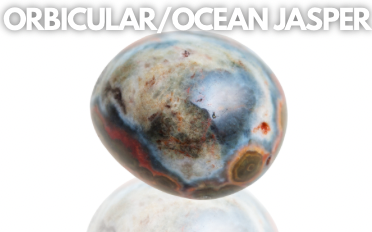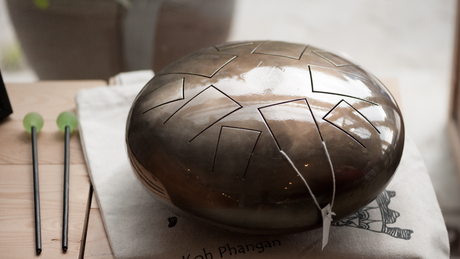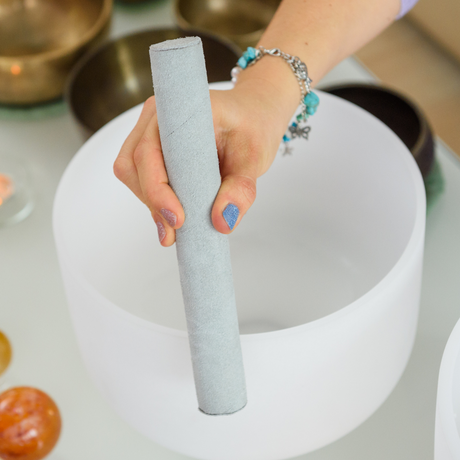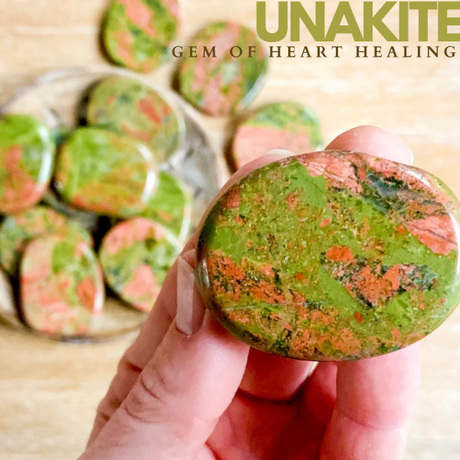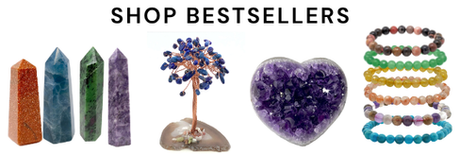Orbicular Jasper is one of nature’s most visually fascinating gemstones. Known for its mesmerizing circular patterns and colorful inclusions, orbicular jasper stands out from other varieties of jasper thanks to its orb-like formations and oceanic feel. Whether you’re a collector, crystal enthusiast, or simply love beautiful natural stones, orbicular jasper is a compelling addition to any collection.

What Is Orbicular Jasper?
Orbicular jasper is a type of jasper marked by rounded, eye-shaped orbs that appear within the stone. These patterns give orbicular jasper its name and make each piece distinct. While some varieties are known by other trade names—such as Ocean Jasper, Sea Jasper, or even Atlantis Stone—they all fall under the broader classification of orbicular jasper.
This stone is a microcrystalline variety of quartz, composed primarily of silicon dioxide, and often includes a variety of mineral inclusions that influence its color and pattern. The orbs themselves form in concentric layers, giving the stone its hypnotic, swirling look.

Appearance and Visual Appeal
The most captivating aspect of orbicular jasper is its orbicular structure—spots, rings, and circular banding that seem to float within the stone. These formations range in color from white, pink, and green to red, brown, and black, often all within the same specimen.
Each piece of orbicular jasper is entirely unique. Some stones appear soft and pastel with flowing color zones, while others showcase bold, high-contrast orbs. This wide variation makes orbicular jasper especially desirable for both jewelry and display.
Fun Fact: The word “orbicular” comes from the Latin orbiculus, meaning “small disk” or “little circle.”
How Is Orbicular Jasper Formed?
Orbicular jasper forms through a slow process of silica-rich volcanic activity. When silica is deposited in gas pockets within lava flows, it cools and crystallizes over time. The “orbicules” (orbs) are created when mineral-rich fluids enter these cavities and begin to form concentric rings around a nucleus—like ripples in a pond.
The unique circular patterns in orbicular jasper are not common in all jaspers. The orbicular structures develop under specific geologic conditions, requiring repeated cycles of mineral deposition, crystallization, and movement within the host rock.
This makes orbicular jasper not only beautiful but geologically rare.

Where Is Orbicular Jasper Found?
The most well-known source of orbicular jasper is the coastal region of Madagascar, where Ocean Jasper was discovered in the early 2000s. This particular variety can only be collected during low tide, as the deposits are found in veins exposed at the shoreline—often only accessible by boat.
Other varieties of orbicular jasper have been found in:
-
Mexico
-
Russia (Kamchatka)
-
Australia
-
Brazil
-
The United States (California, Oregon, Utah)
Each source yields slightly different patterns and color palettes, but all orbicular jaspers share the defining characteristic of circular patterning.
Types of Orbicular Jasper
While “orbicular jasper” is the umbrella term, there are many named varieties based on their origin or appearance:
What is Ocean Jasper?
Possibly the most famous type of orbicular jasper, Ocean Jasper is found exclusively in Madagascar. It often features vibrant pastel or contrasting orbs, and its swirling patterns can resemble underwater coral formations.
What is Sea Jasper?
Sometimes used interchangeably with Ocean Jasper, Sea Jasper is another term for orbicular jasper with marine-like aesthetics. It may refer to similar material from slightly different mining zones in Madagascar.
What is Poppy Jasper?
This type of orbicular jasper is found primarily in California and is known for its vivid red and yellow orbicules that resemble poppies.
What is Exotica Jasper?
Exotica Jasper (also known as Sci-Fi Jasper or Ocean Wave Jasper) features intricate, alien-looking orbicular structures in cool tones and is often found in Mexico or Brazil.

The History of Orbicular Jasper
The history of orbicular jasper is closely tied to geological exploration and trade in ornamental stones. While orbicular jasper has likely been used decoratively for centuries, it wasn’t until the 20th and 21st centuries that it gained widespread recognition—especially with the discovery of Ocean Jasper in Madagascar.
Ocean Jasper’s Rediscovery
In the late 1990s, a deposit of orbicular jasper was rediscovered along the remote coast of northwest Madagascar. The stone, later trademarked and marketed as Ocean Jasper, was revealed only at low tide and could be accessed exclusively by boat. This rarity, combined with its vibrant orbicular patterns, caused a surge in demand among collectors and crystal enthusiasts.
The mine’s remote location and eventual depletion of surface-level deposits made high-quality Ocean Jasper increasingly rare, adding to its mystique and value.
Earlier Global Use
Other forms of orbicular jasper, such as Poppy Jasper from California or orbicular material from Russia and Mexico, were used in carvings, cabochons, and display pieces throughout the 20th century. However, these were often grouped generically under the label “jasper” without recognition of their unique orbicular structure.
It’s only in recent decades that orbicular jasper has been appreciated as a distinct geological category—celebrated for its concentric mineral rings, aesthetic appeal, and geological complexity.
Uses and Applications
Orbicular jasper is as versatile as it is stunning. Here are some of the most popular uses:
-
Jewelry: Cabochons, beads, pendants, and statement rings
-
Display Pieces: Polished slabs, spheres, towers, and palm stones
-
Carvings: Skulls, animals, hearts, and geometric shapes
-
Meditation & Decor: A calming visual focal point for homes or spiritual spaces
Its durability, combined with its unique appearance, makes orbicular jasper a natural choice for anyone looking to add visual interest and texture to their space or style.

Metaphysical Uses Of Orbicular Jasper
While some believe orbicular jasper holds metaphysical properties, its beauty alone is enough to inspire connection and meaning. Many who work with crystals attribute these qualities to orbicular jasper:
-
Nurturing & Calming: Said to promote peace of mind and emotional stability
-
Cyclical Insight: The orbs are thought to symbolize cycles, helping people understand patterns in their life
-
Connection to Nature: Its resemblance to coral, earth, and ocean inspires feelings of balance and grounding
Whether you believe in crystal energy or not, there’s no denying the calming presence that orbicular jasper adds to any space.

Why We Love It at Rare Earth Gallery
We source our orbicular jasper from ethical suppliers, hand-selecting each piece for its color, symmetry, and orb definition. Our collection includes:
-
Ocean Jasper hearts and palm stones
-
Orbicular jasper carvings and towers
-
One-of-a-kind statement slabs
-
Jewelry settings that highlight natural patterns
As Arizona’s most trusted crystal shop—voted Best of the Valley for 10 years and backed by 1,600+ five-star reviews—we take pride in offering orbicular jasper pieces that truly stand out.
How to Care for Orbicular Jasper
Orbicular jasper is durable, but like all stones, it benefits from mindful care:
-
Clean gently with warm water and a soft cloth
-
Avoid prolonged exposure to sunlight, which may fade color in some pieces
-
Store separately to avoid scratches from harder gemstones

Final Thoughts on Orbicular Jasper
Orbicular jasper isn’t just a stone—it’s a visual story of Earth’s creative forces. With each orb and swirl, it reveals layers of volcanic history, mineral flow, and time itself. Whether you’re drawn to its patterns, origin, or presence, orbicular jasper is one of the most engaging stones in the natural world.
FAQ: Orbicular Jasper
What is orbicular jasper?
Orbicular jasper is a patterned variety of jasper featuring circular or orb-like formations. These orbs create unique patterns that resemble eyes, waves, or coral formations. It’s a type of microcrystalline quartz found in several parts of the world, with Ocean Jasper from Madagascar being the most well-known.
How does orbicular jasper form?
Orbicular jasper forms in volcanic rock cavities when silica-rich fluids cool and crystallize. As minerals precipitate layer by layer around a central point, orbicules (circular inclusions) are created. These layers build up over time, forming the stone’s signature orbicular pattern.
How is orbicular jasper formed?
Geologically, orbicular jasper is formed through hydrothermal activity in gas bubbles of volcanic flows. These bubbles become filled with silica and other minerals, which settle in concentric rings as they cool and harden. Over time, pressure and mineral content variations give the stone its layered appearance.
Where is orbicular jasper found?
Major deposits of orbicular jasper are located in Madagascar (Ocean Jasper), Mexico, Australia, Russia, and parts of the United States. Each region produces orbicular jasper with unique color combinations and orb shapes, adding to its global appeal.

